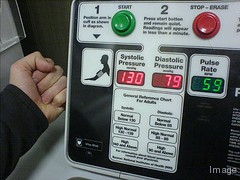No matter your age or gender, when you go to the doctor or hospital one of the first things they will check is your blood pressure. It is one of the vital signs that can tell important information about your current health status. If you are someone who does not go to the doctor very often, then you may not know how important these readings are, and even what your numbers mean.
Many people who know they have a history of low or high blood pressure may have a blood pressure cuff at home where they can monitor their readings at home and then report them to their doctor. Others, however, may have never had they blood pressure reading checked and are unaware of their current status. It is important to have this checked and have the numbers explained to you by your doctor or the pharmacist if you are checking it at the store.
What is the Systolic Pressure?
The blood pressure reading is testing how much pressure the blood exerts on the vessels while the heart beats. There are two numbers, the systolic pressure and the diastolic, and are written in the form of a fraction. The top number is referred to as the systolic and the bottom number is the diastolic. In understanding what these numbers represent, you will better understand causes for the number readings and also what indications the numbers give.
The systolic refers to the time when the heart is contracting. More specifically, it is when the left ventricle of the heart contracts. Systolic pressure keeps the blood flowing in order to get oxygen and nutrients to the body’s cells, and also get rid of waste material. This is a very vital function and if it is hindered can cause complications with your health.
If your systolic pressure is too low (hypotension), the body’s cells are not receiving the proper nutrition and oxygen from the blood flow. Cells can die off this way. Typically, the systolic number is considered low once it falls below the 90 number mark. This is a condition you will probably want to consult your doctor on in order to get some ideas for treatment and management.
If your systolic numbers are too high (hypertension), then the smaller blood vessels in your body can be affected. This can cause a rupture of blockage which can lead to damage or failure of an organ as in a heart attack, aneurysm, artery damage and narrowing, heart failure, enlarged left heart, coronary artery disease, transient ischemic attack (TIA), dementia, stroke, mild cognitive impairment, kidney scarring (glomerulosclerosis), kidney failure, Kidney artery aneurysm, for example. If your systolic is running higher than 140 consistently you should seek professional help. A physician can properly diagnose the problem and suggest a health regimen for you.
Sometimes it is necessary to make modifications to your health like a healthy diet and exercise program, and these will help control the blood pressure. Other times a medication or other aid may be recommended to lower the blood pressure if it is running consistently high. If you are suffering with symptoms of low or high blood pressure, and have not checked your readings, please set an appointment to see your physician.
